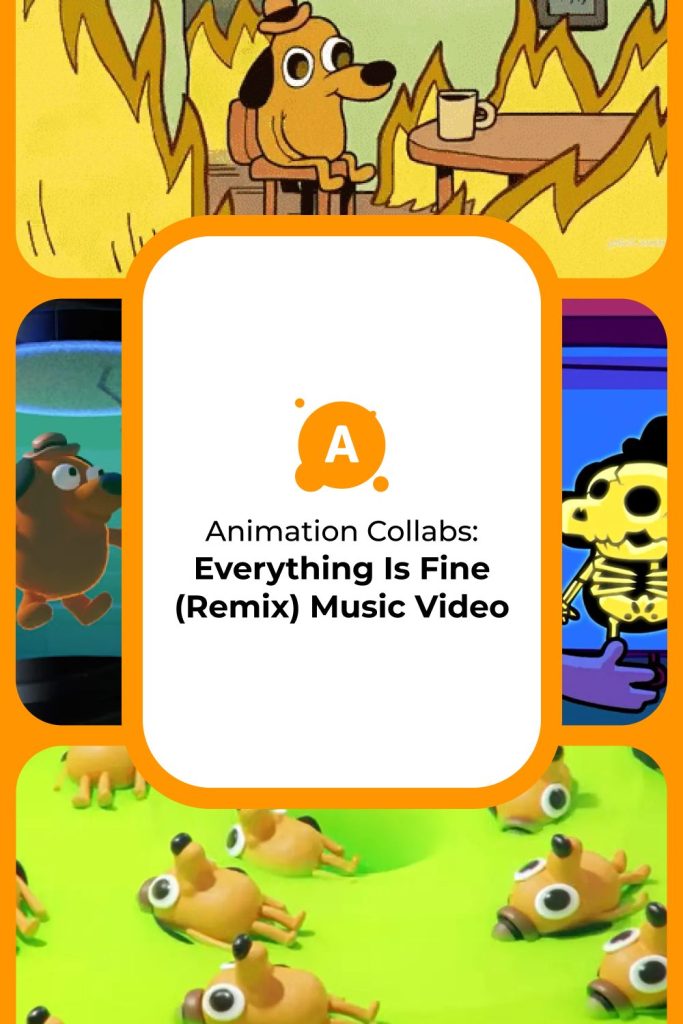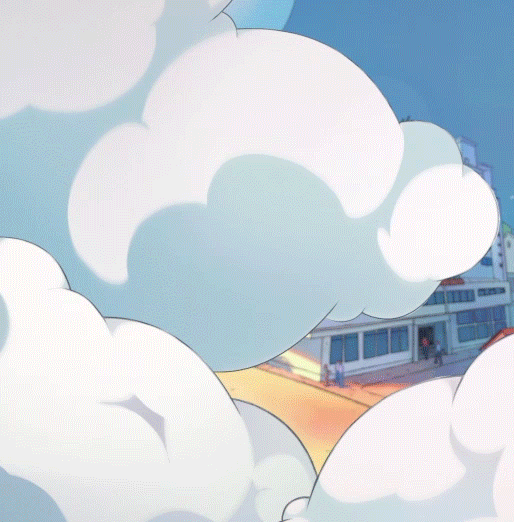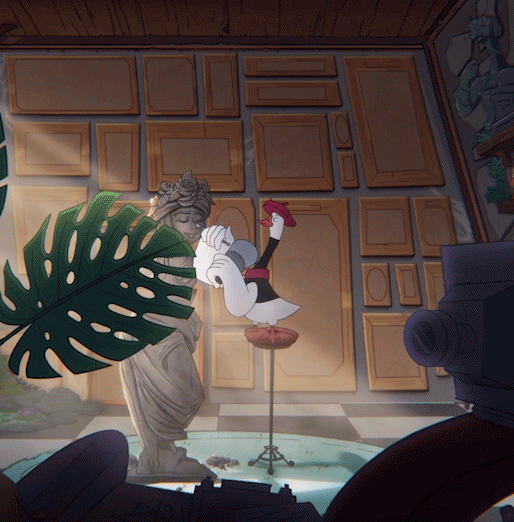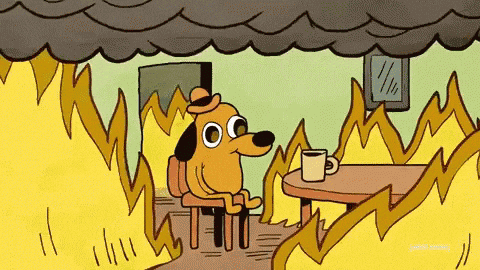
If you’ve spent any time online, you’ve seen KC Green’s iconic “This is Fine,” where a dog with a cute hat is calmly sipping coffee while the room burns around him. This meme gained popularity over 10 years ago, after it was featured in a six-panel comic strip called On Fire, as part of the Gunshow webcomic series. It quickly became a shorthand for our collective ability to smile through chaos when all we want to do is scream.
However, the meme recently took on a new life in animated form, thanks to the wild, multi-artist collaboration “Everything Is Fine (Remix),” produced by Living Tombstone and brought to life by Jellybox Studio, featuring a staggering lineup of contributors. This project is a case study in how large-scale animation collabs work. Let’s break down what it takes to make a collab like this happen.
The Roots of Animation Collabs
Animation collaborations are a staple of the online community, from the first time artists were able to share Flash animations on websites like Newgrounds to their current prevalence on YouTube and TikTok. Collaborations are a great way for artists to work together and get to know each other, but let’s have a look at how the internet supercharged them to become such a massive influence on the community.
- Early Web & Flash Era (2000s) – On sites like Newgrounds, animators began passing around files and combining shorts into group projects. Collabs like “Halloween Collabs” or “Animator vs Animator” stick fights became viral showcases where dozens of creators each contributed a segment. The novelty was in seeing wildly different art styles stitched together into one chaotic video.
- YouTube Growth (2010s) – As YouTube animation grew, creators like SrPelo, Egoraptor, and OneyNG carried that same spirit. Music video collabs became popular, with artists tackling short segments synced to songs. Fan collabs around shows (Pokémon Reanimated, Shrek Retold) or memes created entire subcultures where hundreds of animators pitched in.
- Modern Collabs (2020s–) – Today, collabs are both grassroots and professional. Indie animators continue to organize reanimation projects on Discord, while studios like Jellybox blend that community energy with professional pipelines, as seen in their most recent project, “The Everything Is Fine (Remix)“ music video. It’s a perfect hybrid of a polished song and open contributions from dozens of artists, showcasing internet culture at its best.
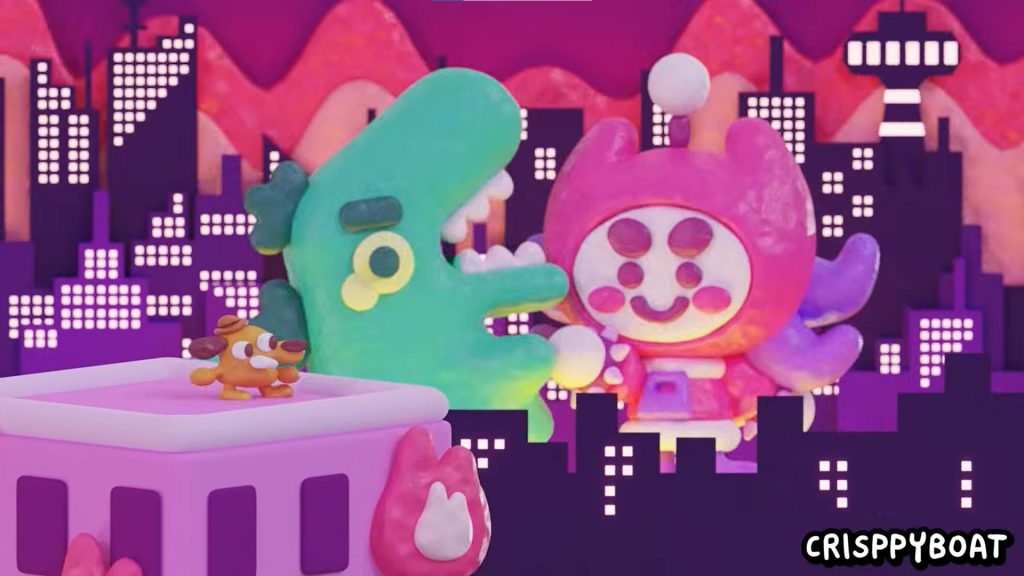
A Celebration of Meme Culture
What makes Everything Is Fine (Remix) special is the way it leans into the meme’s meaning. The “fine” dog becomes a playground for dozens of different styles, ranging from chaotic slapstick to beautifully polished shots, to crazily animated loops, and even puppets. Instead of presenting a single polished vision, the video thrives on contrast—mirroring the chaos of the internet itself, or more accurately, the strange and even frustrating state of our current geo-political landscape.
It unites indie creators and industry pros on equal footing through its use of color, quick-paced transitions and morphs, and the dog being pulled through each scene like a doorway introducing some form of new hell. At its core, this project shows the power of remix culture. A simple webcomic panel from 2013 became a meme, then a shorthand for cultural collective anxieties, and now, thanks to this collab, a full-blown music video with dozens of artists.
And as KC Green himself reminds us, the fire isn’t over yet, as his Metroidvania-style game “This Is Fine: Maximum Cope” is on the way.
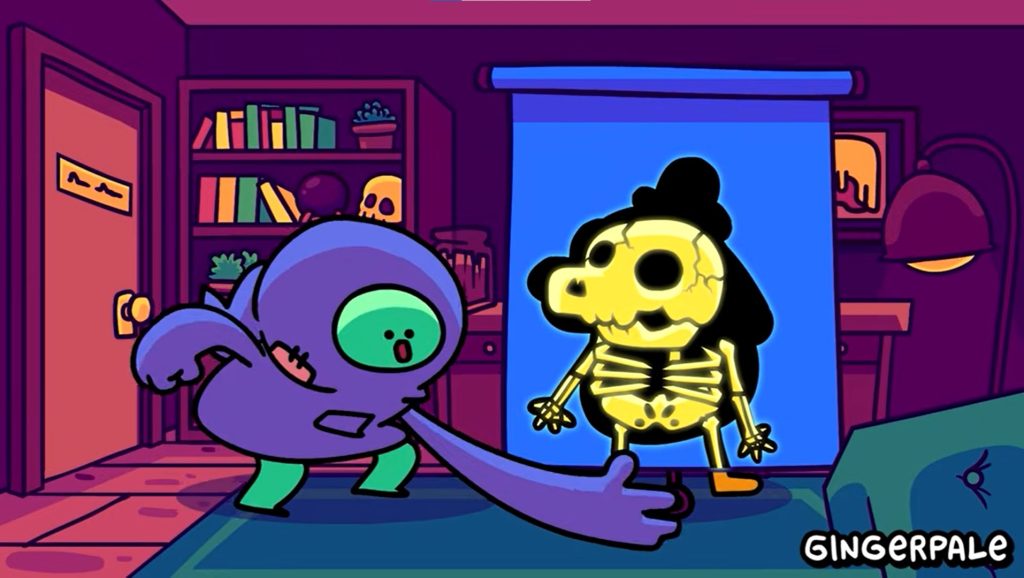
How Animation Collabs Work (Simplified)
- Song & Storyboard – The audio, whether it’s a song or a movie clip, is locked, then rough storyboards or animatics are made to assign beats of the song to different artists.
- Shot Assignments – Each contributor gets a section—sometimes just a few seconds.
- Style Freedom – The beauty of collabs is that each scene can feel wildly different while still serving the bigger whole.
- Technical Specs – Contributors follow baseline requirements (frame rate, export format, aspect ratio) so the editor can stitch them together.
- Editing & Polish – The project leads (Jellybox Studio here) assemble, smooth transitions, add effects, and sync everything to the audio.
- Final Release & Credits – Everyone gets their moment in the spotlight.
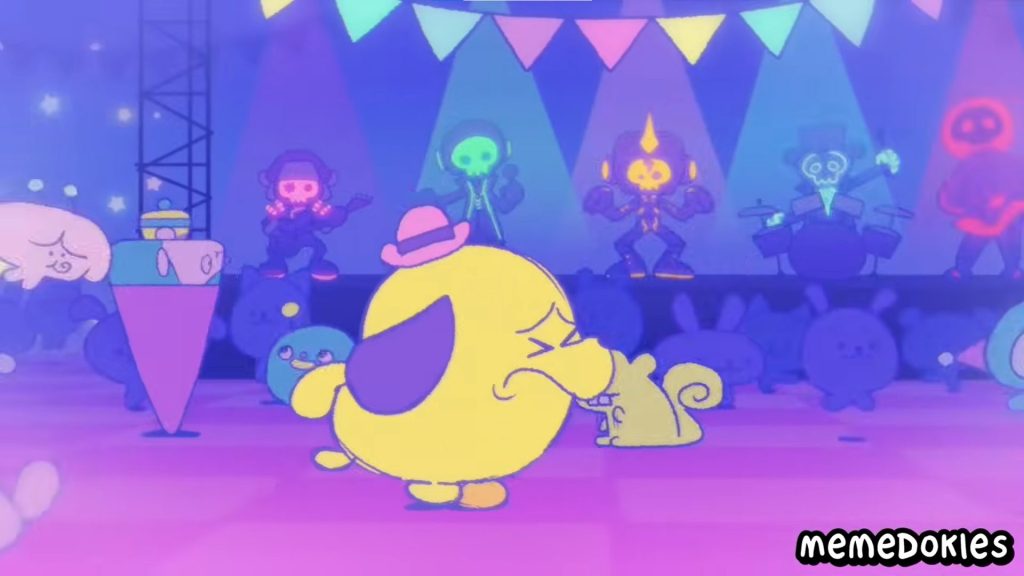
Want to take your collab skills further?
Working on a collab is fun—but when your visuals stand out, your shots leave a lasting impression. That’s where strong visual development comes in.
At Animation Club School, our Advanced Visual Development for Animation Course will teach you how to design memorable characters, compelling color scripts, and cinematic worlds that pop off the screen.
✨ Perfect for students who want their next collab shot to steal the show.
The Song Comes First
The backbone of the collab was the track itself:
Production by Yoav Landau, a composer for the group The Living Tombstone. The group has been a popular icon in the animation community since the early days of their YouTube challenge, with songs like “Discord,” inspired by My Little Pony, and “Spooky Scare Skeletons” (remix).
Joined with Writers like Jeremy Ropp, Eugene Goldstein, Ari Castleton, Jordan Rosato, Samuel Cowan, and Jacob Strick.
The song provided the creative anchor for the video, setting its pacing, mood, and tone that every animator would need to sync with. In collaborative animation, the music is often finished before visuals are assigned, because timing is everything.
Permission & Source Material
Since the original This is Fine character belongs to KC Green, the first step was to get his blessing. Not only did KC greenlight the collab, but he’s also developing his own game (This is Fine: Maximum Cope), which made this remix project a timely celebration of his work.
The Studio Organizers
Jellybox Studio helmed the video creation, acting as the central hub for communication. In big collabs like this, the studio (or project lead) handles more than just animating. They are tasked with:
- Assign scenes and shots to different artists
- Provide deadlines and technical specs (resolution, frame rate, aspect ratio)
- Collect finished shots and stitch them into a seamless final cut
- Handle consistency checks so the video feels cohesive, even when 20+ artists contribute

The Contributors
Here’s where it gets exciting. The video included contributions from a massive roster of animators and creators. You’ve got YouTube animators like SrPelo, Zeurel, GingerPale, SpindleHorse, and JavaDoodles. Flipnote & Pixel Artists like kekeflipnote, grind3h. Experimental Animators like Doodley3D, memedokies, violxiv, and Starghettis. Full on Industry Artists & Filmmakers like Andrew Brooks, ThirdChildFilms, and Inbal Breda. Followed by popular Meme & Comedy Creators like PringusMcDingus, SmallButera, and SpziSHORTS.
This mix of styles—2D hand-drawn, 3D, pixel animation, stop motion, and puppets—gave the project its chaotic charm. Each artist had a slice of the song and full freedom to interpret it in their style. Here’s a full list of all the contributors and what makes their styles unique for you to check out for yourself.
Contributor Style Guide
- @grind3h – Flipnote-inspired, snappy pixel/line art loops with a raw, energetic feel.
- @nevercakegames – Surreal, colorful animation with a comedic and story-driven edge.
- @GingerPale – Clean, cartoony characters with charming, lighthearted humor.
- @JavaDoodles – Soft, expressive drawings with fluid movement and whimsical vibes.
- @kekeflipnote – Iconic Flipnote animation: bold, chunky lines with fast-paced squash & stretch.
- @doodley3d – 3D stylization with a playful, experimental twist.
- @memedokies – Meme-inspired comedy, absurdist timing, and exaggerated poses.
- @Crisppyboat – Rough, textured art with sharp humor and punchy expressions.
- @everydaylouie – Loose, lively animation with a sketchbook energy.
- @violxiv – Atmospheric and moody visuals, blending surreal with stylish.
- Charles D’avignon / coolguycharles – Retro-flavored humor and experimental 2D cuts.
- @ac-bu – Japanese pop-art surrealism; bold shapes and vibrant, flat color.
- @SovanJedi – Clean anime-inspired linework, strong motion, and energy.
- @speedoru – Slick, polished character animation with fast comedic timing.
- @SrPelo – Wild, chaotic, loud slapstick energy; exaggerated faces and screams.
- @Zeurel – British humor meets squashy, high-energy 2D character animation.
- @Starghettis – Soft pastel palettes and quirky, fun shapes.
- @licree – Playful cartoon style with sharp design sense.
- Andrew Brooks / andrewbrooks93 – Cinematic, story-driven shorts with bold compositions.
- @IvanAlmighty – Punchy character humor and sharp comedic edits.
- @PringusMcDingus – Known for surreal meme art and awkwardly funny expressions.
- @inbalbreda3391 – Professional, polished 2D with strong acting choices.
- @ThirdChildFilms – Filmic sensibilities with atmospheric pacing and framing.
- @SmallButera – Comedy shorts with bold colors and simplified, expressive characters.
- @SpindleHorse – Gothic, stylized animation (Helluva Boss / Hazbin Hotel vibes).
- @JaimeR2D – Smooth animation with an indie-cartoon aesthetic.
- @spziSHORTS – Snappy meme humor, crisp timing, and bold expressions.
Together, this roster encompasses everything from polished, studio-level 2D to chaotic meme animation—the variety is what makes ‘Everything Is Fine (Remix)‘ such a celebration of internet creativity.
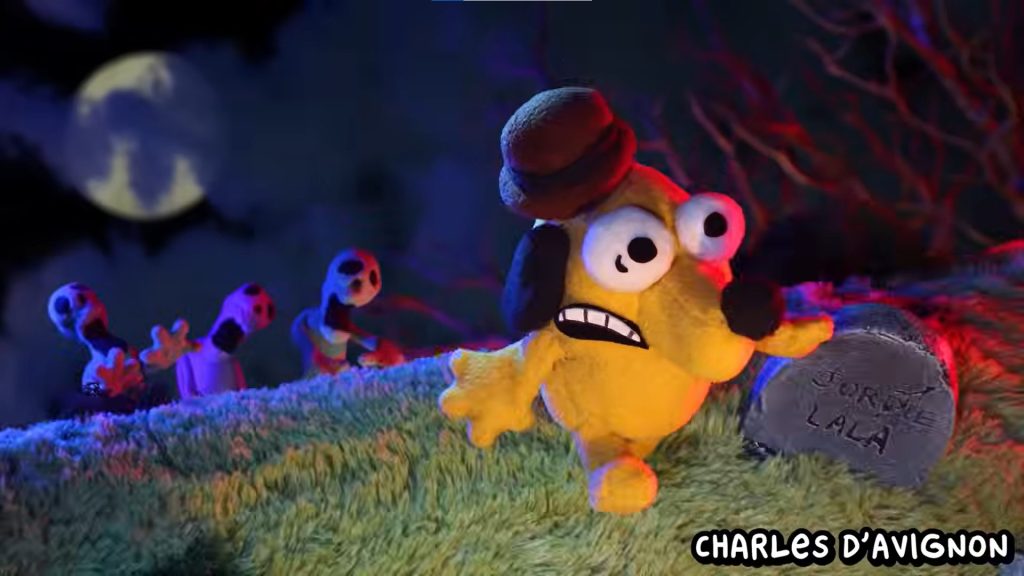
How Students Can Join (or Start) Animation Collabs
If you’re an animation student, collabs are one of the best ways to sharpen your skills and build your portfolio while having fun. Projects like Everything Is Fine (Remix) may look huge, but they grow out of the same grassroots energy you can tap into right now.
Here’s how to get started:
- Find Community Hubs – Many collabs start on platforms like Discord, Newgrounds, or Twitter/X. Search for “reanimation collabs,” “MAPs” (multi-animator projects), or join animation servers where open calls for contributors get posted. Consider joining our Discord to start connecting with potential collaborators.
- Start Small – Don’t wait for the biggest collabs. You can join a MAP on YouTube or TikTok, where you animate a short segment of a song. Even 5–10 seconds teaches you how to meet deadlines and follow technical guidelines. You can even start on your own by finding some voice clips to animate, which will help you prepare for future collaborations.
- Follow the Specs – Collab leads will provide details (fps, aspect ratio, file format). Treat these like professional instructions—because in animation studios, this exact discipline makes the difference.
- Bring Your Style – Collabs shine because every shot looks different. Don’t stress about matching others; instead, lean into what makes your style fun, expressive, or unique.
- Network Through Credits – When a collab drops, everyone involved gets credited. This is a great way to have your work seen by peers, potential collaborators, and even studios that respect community-driven projects.
- Try Leading One – Once you’ve joined a few, consider organizing your own. Start with a short song or meme, assign clips to classmates or online friends, and take the role of editor. You’ll get experience in project management that mirrors what a studio lead or producer does.
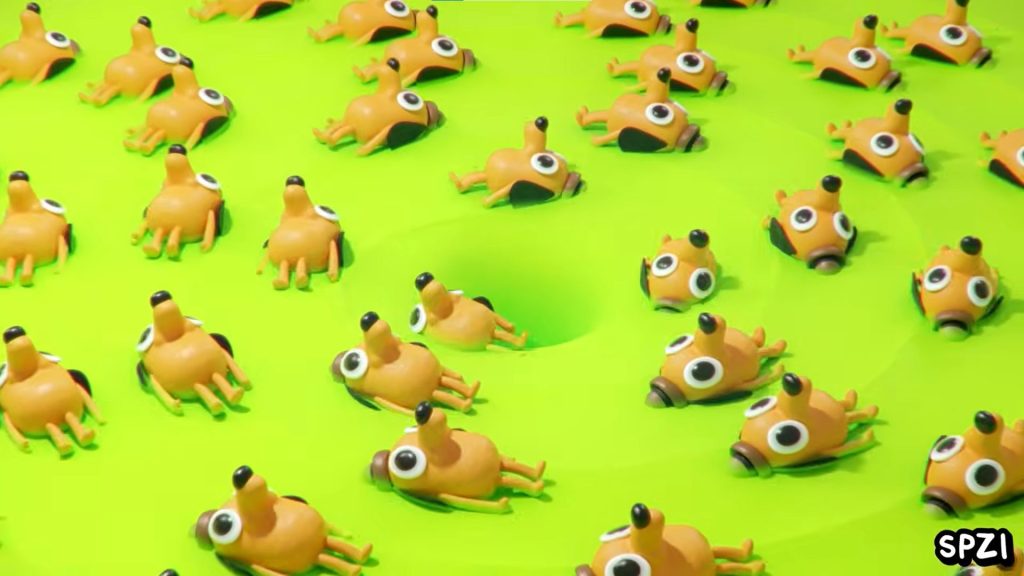
Conclusions
Animation collabs started as scrappy internet experiments, but today they’re thriving as massive showcases of community talent. They have become like a mini-animation bootcamp. You practice syncing to audio, meeting deadlines, adapting to specs, and collaborating with others. These are all the same muscles you’ll use in a professional studio. Plus, you get the joy of seeing your work alongside dozens of other styles in one wild, finished piece.
If you’re an aspiring animator, projects like this are reminders that you don’t need to create alone—sometimes the most powerful work comes when you add your voice to the chorus.
🚀 Ready to level up your animation collab game?
Don’t just join projects—be the animator everyone remembers.
The Advanced Visual Development for Animation Course at Animation Club School gives you the tools to:
- Build striking character & environment designs
- Develop cohesive color stories for any scene
- Add polish that makes your work stand out in group projects and professional reels
Spots are open now—join the course today and turn your collab contributions into portfolio-ready animation magic.
